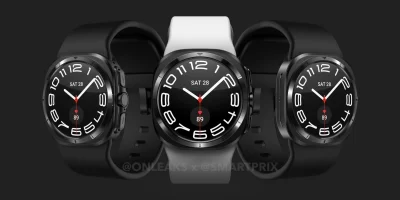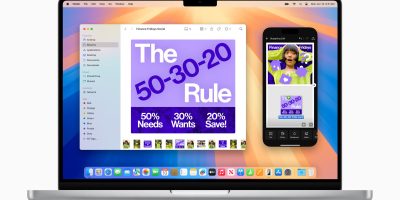The Pixel 4 is finally here and man am I ever underwhelmed.
I suppose that I shouldn’t be because the phone has been leaked in its entirety for months now with full reviews going up before the phone was even launched. For those who watch these types of things, it shouldn’t come as any surprise this happened because it was the same script last year with the Pixel 3 and 3 XL.
Despite knowing damn near everything about the device before it was launched, I’m still bummed. Five key points stick out to me and they make the Pixel 4 lag well behind the competition.
1. Small batteries
![]()
What a mess. The Pixel 4 is launching with a 2,800 mAh battery. To be completely truthful, I didn’t think there was any way the leaks were accurate about that number because it’s mind-numbing to me that any serious flagship would launch with such a small battery in 2019. That 2,800 mAh cell is smaller than both last year’s Pixel 3 (2,915 mAh) and the far more wallet-friend Pixel 3a (3,000 mAh). It also has a smaller battery than the Samsung Galaxy S10e (3,100 mAh), LG G8 (3,500 mAh), and OnePlus 7t (3,800 mAh). And every one of those devices can be had for far cheaper than the $800 Pixel 4.
To make matters worse, the Pixel 4 is launching with a 90hz display. Don’t get me wrong, I am absolutely in love with high-refresh-rate displays and don’t even consider using anything with under 90hz as my daily driver. This is the next “revolution” in phones and I welcome our new overlord. But the thing about putting a display that refreshes 90 times a second instead of 60 in a phone is that its pretty power-hungry. This will undoubtedly make the battery life situation even more dire. The Pixel 3 already had mediocre (at best) battery life, now we have a smaller battery and more power-hungry display on top of it. Ouch.
2. Inadequate Storage
![]()
Here’s a completely arbitrary list of phones released in the last 12 months and their base storage:
- Google Pixel 4/4XL: 64 GB
- Samsung Galaxy S10e/S10/S10+: 128 GB with microSD card support up to 1 TB
- OnePlus 7 Pro/7t: 128 GB
- LG G8: 128 GB with microSD card support up to 1 TB
- Apple iPhone 11: 64 GB
Are you sensing a trend?
We’re living in a world of massive music playlists, 4K videos, and downloadable maps with tens of thousands of points of interest. While 64 GB sounds like a lot and may be fine for some people, I find myself wanting more. If this is a device I’m picking up for the next couple of years, I don’t want to be worried about clearing out space when I want to upgrade my phone or download a new season of Bojack Horseman from Netflix. To make matters worse, Google no longer offers full-resolution photo backups to Pixel owners so you’re stuck with backing up “optimized” pictures. Once you delete those full quality pictures, they’re gone forever.
If that wasn’t enough, Google is relying on old storage technology. Earlier this year, the OnePlus 7 Pro launched with UFS 3.0 storage and a few other phones have followed since. Google uses UFS 2.1 storage, a slower standard, for the memory chip inside the Pixel 4 and 4 XL. This can impact both reading and writing speeds which means your data is slower to save and apps and files load slower once they’re on the device.
So, not only do we have less storage, but it’s slower too. Not a great combination.
3. Only 6GB of RAM?
![]()
Let’s hit on one more “big numbers sell phones” aspect. The Pixel 4 and 4 XL come with 6 GB of RAM, less than flagships from Samsung and OnePlus and equal to that of LG. It feels a little silly to say this in 2019, but should you really buy a phone with less than 8 GB of RAM? These devices cost nearly a grand and will be our constant companion for the next couple of years. Why put yourself behind the 8-ball right out of the gate?
I might not have such an issue here if my Pixel 3 XL experience was flawless, but it was far from that. I was an early adopter and ordered my device as soon as it was available. The first month or two was basically unbearable with apps constantly being killed in the background, sometimes even while being used. This did get resolved through software down the road but do you know what would’ve made it a lot more bearable? Having a competitive amount of RAM in the first place.
4. No ultra-wide camera
![]()
Google has the reputation for the best smartphone camera out there and it’s well earned. They offer some really smart features and an excellent end product. Their computational photography is fantastic and stands above Samsung, LG, and Huawei at the top of the heap. I have zero problems with the picture samples that I’ve seen from the Pixel 4 so far. Our own Nick Gray has taken some really nice shots that in fact make me question why you pick up another device if picture quality is the only thing you care about.
Where I have an issue is what Google removed and what they seemingly forgot to add. Hey Google, where’s my wide-angle lens?
Every major smartphone on the market right now has a wide-angle lens and that’s not by mistake. Wide-angle lenses are so much fun to shoot with and can get some incredible shots that you can’t truly replicate in post. Sure, there are filters and such, but nothing really looks as strong as a picture taken with a dedicated lens. It’s baffling to me that there isn’t a lens on the rear of the device, but it’s beyond that to see only one lens on the front of the device. The Pixel 3/3 XL had a front-facing lens for dedicated wide-angle selfies and was a feature of Google’s marketing for many, many months post-launch. What the hell happened? I know they needed room for the new Soli radar chip, but c’mon.
5. Value/price
![]()
I touched on this a little bit earlier with the comparisons, but the phone is just overpriced for what you get. That’s not to say that the phone isn’t necessarily worth that much money on its own, but when you compare it to what else is out there, it’s not a competition. We’re going to focus on the Pixel 4 XL since it’s a bit of an easier comparison to other devices. Also, Google has made it pretty obvious that it wants people to buy the XL version with the laughably small battery in the Pixel 4.
So, we’re at $899 for the base Pixel 4 XL. Let’s compare that to other premium flagships.
- Samsung Galaxy S10+: $999
- Samsung Galaxy Note 10+: $1,099
- OnePlus 7 Pro: $669
- LG V50: $999
- Apple 11 Pro: $999
The first thing that jumps out at me is just how good of a value the OnePlus 7 Pro is, but beyond that, how bad the Pixel 4 XL is. Spend $100 more on the Galaxy S10+ and you get a better display, pretty close on the camera, much larger battery, fast wireless charging, reverse wireless charging, storage that is double the size and can be added to with a microSD card, and a wide-angle lens. Ditto for all of that for the Note 10+ and you get the S-Pen and an even larger battery. The OnePlus 7 Pro comes with more base storage and the faster UFS 3.0 standard as well as in-display fingerprint scanner. The V50 has more storage and supports 5G. The iPhone is an iPhone.
It’s a good thing that the Pixel 4 XL costs less than every device on that list because it already loses as a value proposition when it’s cheaper. Anything more than the $899 price tag and it would get absolutely crushed.










Comments